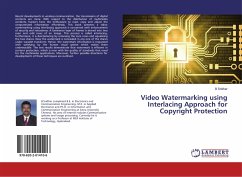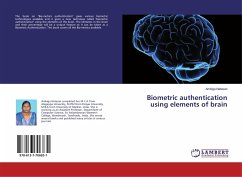Video watermarking is the practice of inserting an encode information known as the watermark, into an original video in an imperceptible manner. The watermark encodes or represents information that can protect the watermarked video, typically identifying the owner (source) or the intended recipient (destination) of the video. The embedded watermark may be detected by using a watermark detector, which enables an application to react to the presence (or absence) of the watermark in a video. However, the watermarked video may be processed, or attacked, prior to watermark detection. Attacks may remove the embedded watermark or make the watermark more difficult to detect.Most watermark detectors will fail to detect the watermark embedded in the attacked video unless the position of the watermark can be identified. In order to overcome this limitation, a new multiwavelet based video watermarking has been proposed. Embedding and detection models are proposed that encompass the behavior of many video watermarking techniques. The multiwavelet transform uses two transformations such as Haar transform and Doubchies transform.
Bitte wählen Sie Ihr Anliegen aus.
Rechnungen
Retourenschein anfordern
Bestellstatus
Storno








